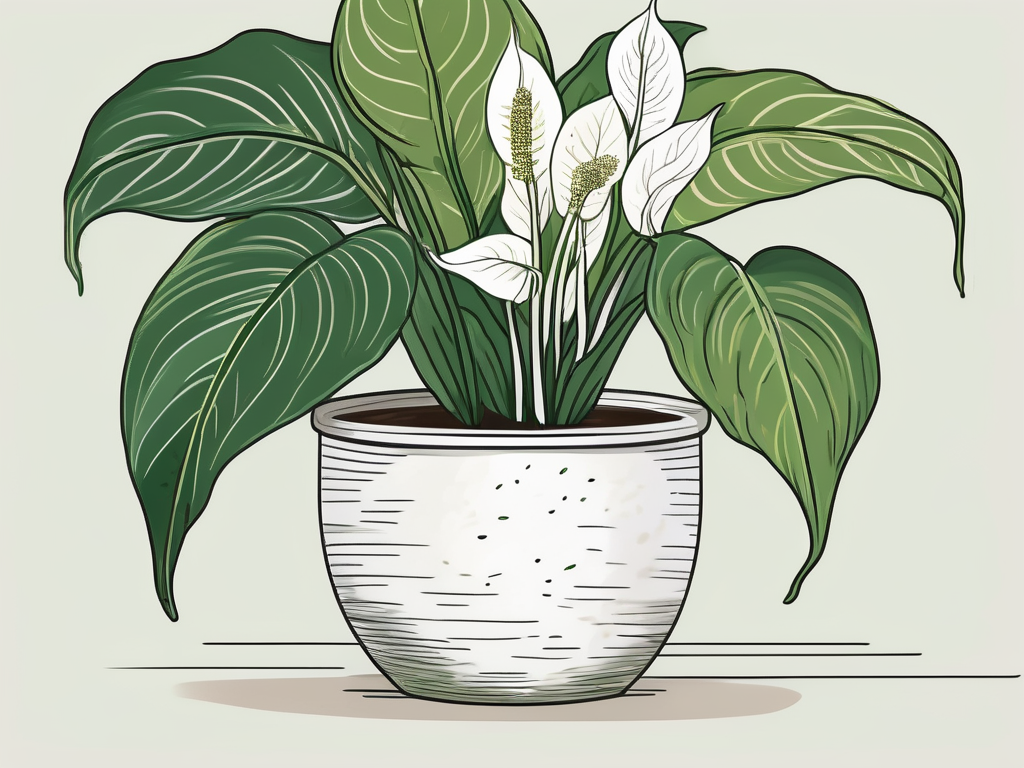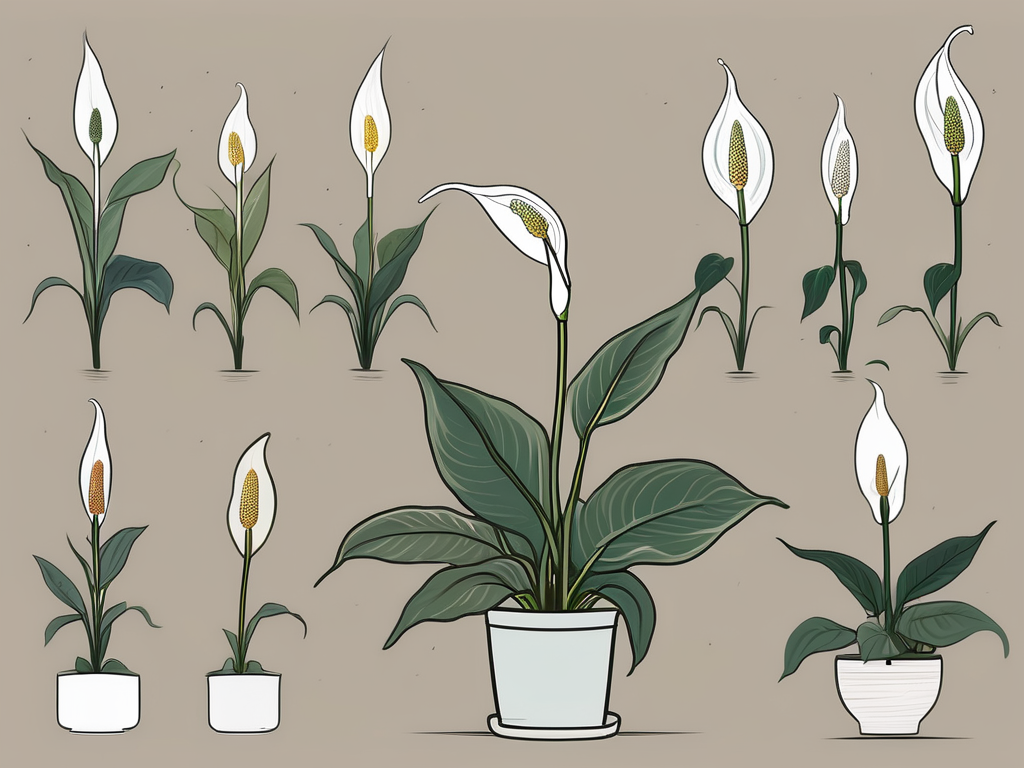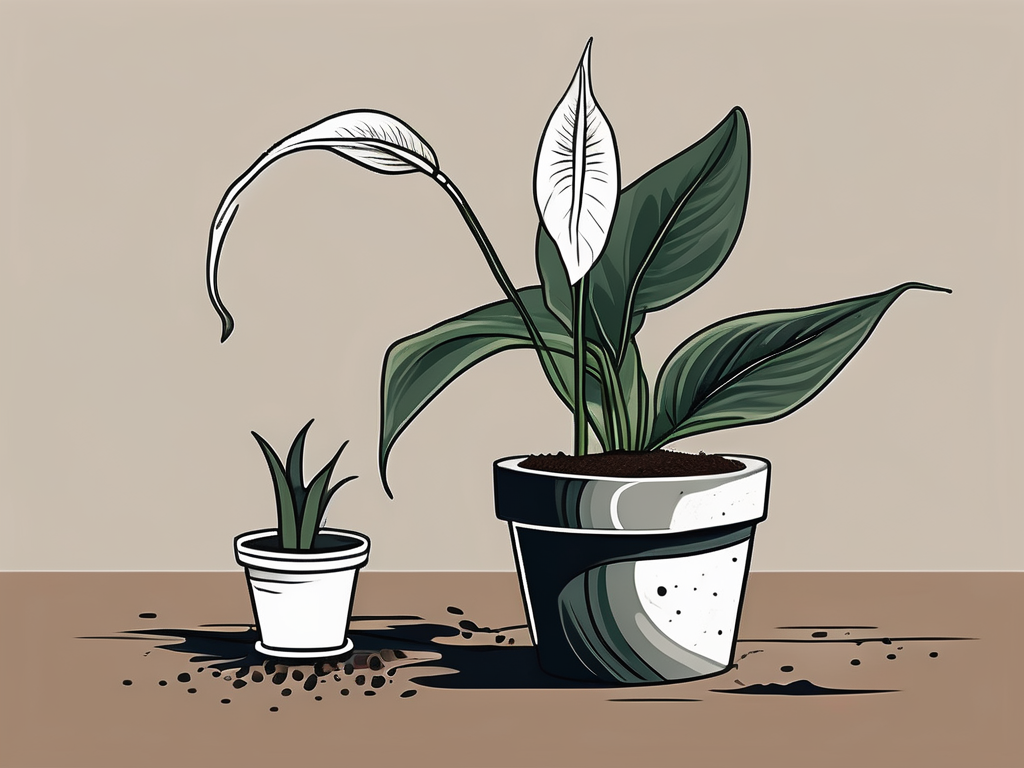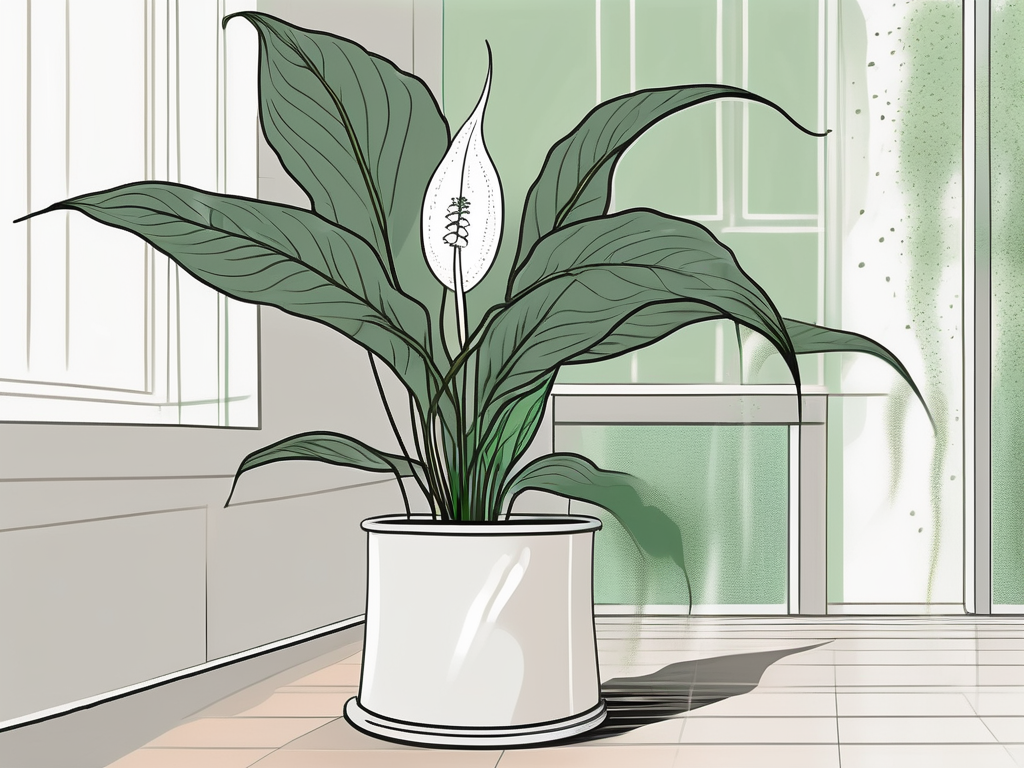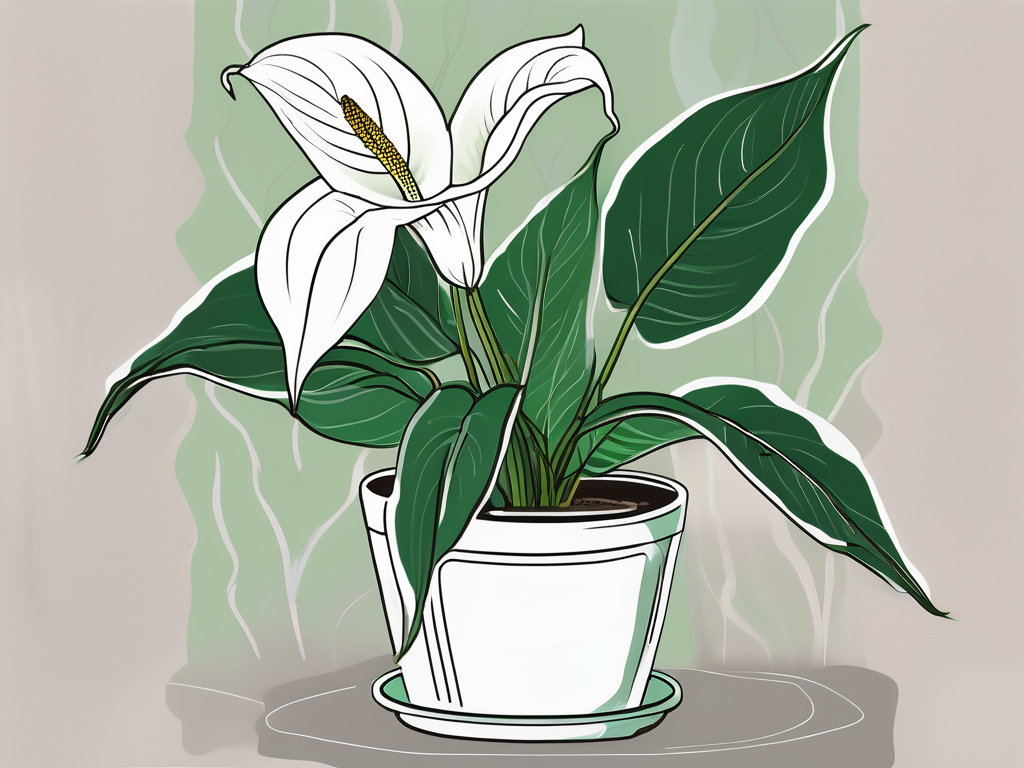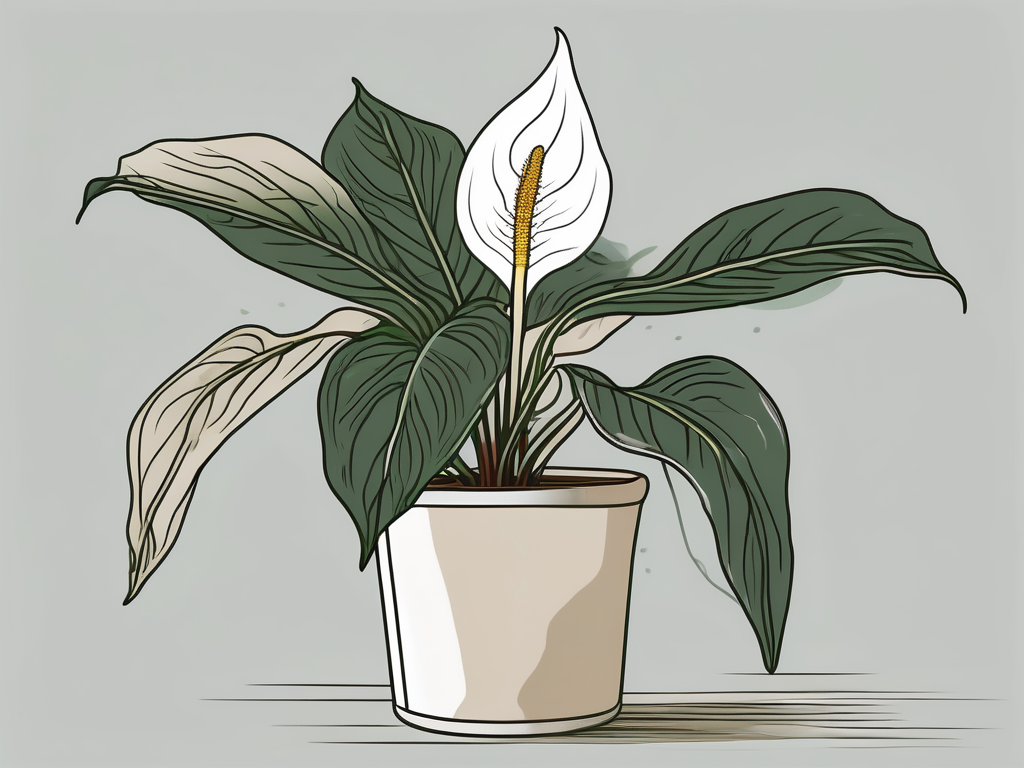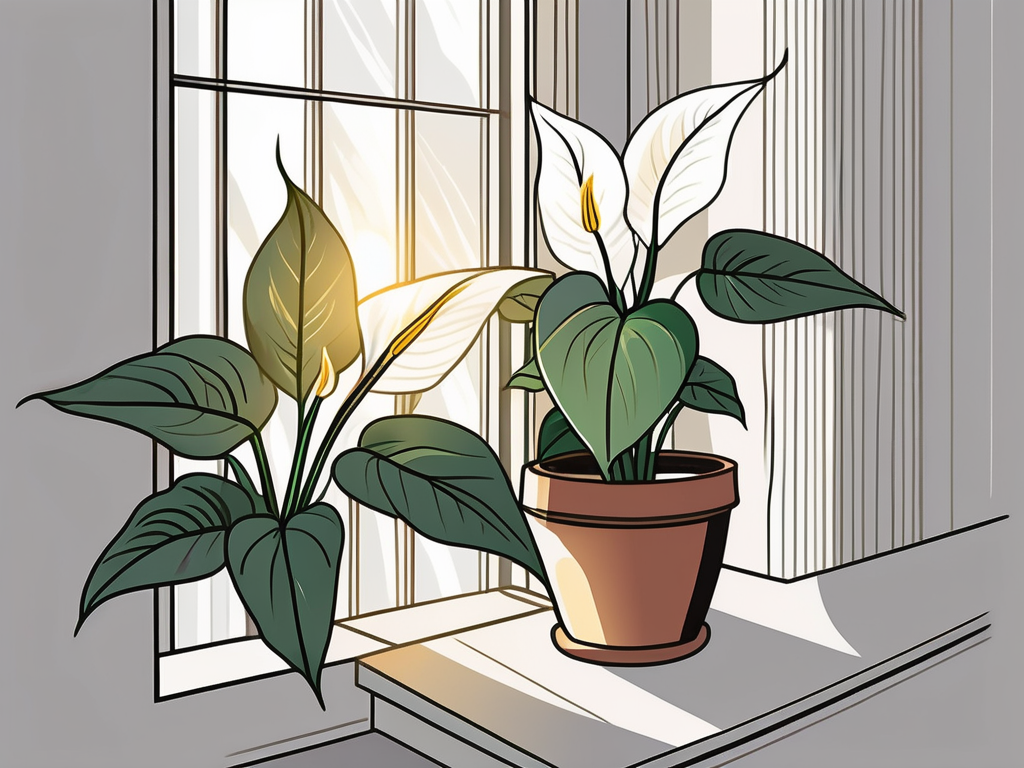
The Peace Lily, with its elegant white blooms and lush green leaves, is a plant that exudes tranquility. It's no wonder that so many people are drawn to this beautiful houseplant. Not only does it add a touch of serenity to any space, but it also requires minimal effort to maintain, making it perfect for both seasoned plant parents and beginners alike.
In this article, we'll explore the many facets of the Peace Lily—from its care and maintenance to its role in interior design. Whether you're looking to add a bit of greenery to your home or seeking tips on keeping your Peace Lily thriving, you're in the right place. Let's dive into the world of Peace Lilies and discover their beauty and calming presence.
The Allure of the Peace Lily
Peace Lilies, known scientifically as Spathiphyllum, are native to the tropical regions of the Americas and Southeast Asia. These plants have long been admired for their striking appearance and the sense of calm they bring to any environment. The glossy, dark green leaves provide a stunning backdrop to the plant's distinctive white flowers, which can bloom throughout the year under the right conditions.
Beyond their aesthetic appeal, Peace Lilies are also known for their air-purifying qualities. NASA's Clean Air Study listed them as effective in removing common indoor pollutants like formaldehyde, benzene, and trichloroethylene. So, not only do they look good, but they also help create a healthier living space. It's like having a natural air filter in your home!
For plant lovers, the Peace Lily offers a perfect blend of beauty and function. Its flowers, which resemble white sails, add a touch of elegance and tranquility, fitting seamlessly into various interior styles. Whether you're going for a minimalist look or a more eclectic aesthetic, the Peace Lily is versatile enough to complement your decor.
Choosing the Perfect Peace Lily
Selecting the right Peace Lily can be an exciting process. When you're in a plant shop, take a moment to observe the variety of Peace Lilies available. You'll notice differences in size, leaf shape, and even flower type. Some Peace Lilies grow to be quite large, making them ideal for floor displays, while smaller varieties are perfect for tabletops or shelves.
When choosing your Peace Lily, look for healthy, vibrant leaves. Avoid plants with yellowing or browning foliage, as this may indicate stress or poor health. It's also a good idea to gently check the soil to ensure it's not too dry or overly soggy. A well-watered plant with firm, green leaves is a sign of a healthy Peace Lily.
Consider the light conditions in your home before selecting a Peace Lily. While these plants are adaptable, they thrive best in bright, indirect light. If you have a spot that receives filtered sunlight, your Peace Lily will be quite happy there. However, they can also tolerate lower light conditions, making them versatile companions in various settings.
Potting and Soil Requirements
Once you've chosen your Peace Lily, it's time to consider its potting and soil needs. These plants prefer well-draining soil that retains some moisture without becoming waterlogged. A good potting mix for Peace Lilies includes a blend of peat moss, bark, and perlite, which offers the right balance of drainage and moisture retention.
When potting your Peace Lily, select a container with drainage holes. This is crucial for preventing overwatering, which is a common issue with Peace Lilies. If water cannot escape, it can lead to root rot—a condition that can severely harm your plant. For an extra layer of protection, you can add a layer of small stones or gravel at the bottom of the pot.
Repotting is generally required every one to two years, depending on how quickly your Peace Lily grows. Look for signs like roots emerging from the drainage holes or a noticeable slowdown in growth as indicators that it's time to upgrade to a larger pot. When repotting, handle the roots gently and ensure the plant sits at the same soil level as it did in its previous container.
Watering Your Peace Lily
Watering is a crucial aspect of Peace Lily care, and getting it right will keep your plant healthy and blooming. Peace Lilies prefer consistently moist soil, but they don't like to be drenched. The best approach is to water them when the top inch of soil feels dry to the touch.
One way to gauge when your Peace Lily needs water is by observing the leaves. If they start to droop, it's a clear sign that your plant is thirsty. However, don't wait too long—prolonged periods without water can stress the plant. On the flip side, overwatering can lead to yellowing leaves and root rot, so always check the soil moisture before watering.
In terms of water quality, Peace Lilies can be sensitive to chemicals found in tap water. If possible, use filtered or distilled water, or let tap water sit out overnight to allow chlorine to dissipate. This extra step can make a significant difference in the health and appearance of your Peace Lily over time.
Light Needs and Placement
Finding the right spot for your Peace Lily is key to its success. As mentioned earlier, these plants do best in bright, indirect light. Too much direct sunlight can scorch the leaves, leading to brown spots or fading. If your home has large windows with sheer curtains, this setup is perfect for providing the filtered light Peace Lilies love.
If your space is on the dimmer side, don't worry—Peace Lilies are adaptable. They can survive in low-light environments, though their growth and flowering may be less vigorous. Consider supplementing with artificial light if needed, especially during the darker winter months.
When placing your Peace Lily, avoid areas with drafts or temperature fluctuations, such as near radiators or frequently opened doors. These plants prefer stable conditions, so placing them in a consistent environment will help them thrive and stay healthy.
Feeding and Fertilization
Feeding your Peace Lily with the right nutrients will encourage lush growth and frequent flowering. During the growing season, which typically runs from spring through fall, apply a balanced, water-soluble fertilizer every six to eight weeks. This will give your plant the nutrients it needs to flourish.
Be cautious not to over-fertilize, as this can lead to salt buildup in the soil, harming the plant. A good practice is to dilute the fertilizer to half the recommended strength, which is usually sufficient for Peace Lilies. During the winter months, reduce feeding frequency, as the plant's growth naturally slows down.
Signs of over-fertilization include leaf tip burn, where the edges of the leaves turn brown and crispy. If you notice this, flush the soil with water to remove excess salts, and adjust your fertilization routine accordingly. Remember, a little fertilizer goes a long way with Peace Lilies!
Dealing with Pests and Diseases
While Peace Lilies are relatively low-maintenance, they can occasionally fall prey to pests and diseases. Common pests include spider mites, aphids, and mealybugs, which can be treated with a gentle insecticidal soap or neem oil. Regularly inspecting your plant and wiping the leaves with a damp cloth can help prevent infestations.
As for diseases, overwatering is the primary culprit behind most issues. Root rot and fungal infections can occur if the soil is consistently waterlogged. To prevent this, ensure your Peace Lily has proper drainage and avoid letting it sit in standing water.
If you notice any signs of disease, such as discolored or wilting leaves, take action quickly. Remove affected leaves, improve air circulation, and adjust your watering habits. With prompt attention, most issues can be resolved, and your Peace Lily will bounce back to its healthy self in no time.
Incorporating Peace Lilies into Your Home Decor
Integrating Peace Lilies into your home decor is a breeze, thanks to their versatility and elegance. Whether you have a modern, rustic, or bohemian style, these plants can add a touch of nature and tranquility to your space. Consider placing them in beautiful ceramic pots that complement your decor, or use decorative plant stands to elevate them off the ground.
Peace Lilies make excellent statement pieces in living rooms, bedrooms, or even office spaces. Their air-purifying qualities also make them a great addition to bathrooms, where they can thrive in the humidity. For a cohesive look, group your Peace Lily with other indoor plants of varying heights and textures to create an indoor oasis.
Don't forget about the potential of Peace Lilies as gifts. Their symbolism of peace and purity makes them thoughtful presents for housewarmings, weddings, or simply to brighten someone's day. With their easy care and timeless beauty, Peace Lilies are bound to impress anyone who receives them.
Peace Lily Varieties to Consider
While the classic Peace Lily is a favorite, there are several varieties to explore, each with its unique charm. The 'Sensation' variety is known for its large, broad leaves and can grow up to six feet tall, making it perfect for spacious rooms. On the other hand, the 'Domino' variety offers striking variegated foliage, adding a splash of interest to any plant collection.
For those with limited space, the 'Sweet Chico' or 'Wallisii' varieties are more compact, fitting nicely on desks or shelves. These smaller Peace Lilies still pack a punch with their vibrant blooms and lush leaves, proving that size isn't everything when it comes to plant beauty.
When choosing a variety, consider the space you have available and the aesthetic you wish to achieve. With so many options, there's a Peace Lily variety for every plant lover and every home.
Final Thoughts
Peace Lilies are more than just pretty plants. They're easy to care for, versatile in design, and beneficial to your indoor environment. By understanding their needs and preferences, you can enjoy the beauty and serenity they bring to your home for years to come.
At Cafe Planta, we love helping you find the perfect plants and accessories for your home. Whether you're a seasoned plant parent or just beginning your green journey, we're here to support you. Feel free to reach out to us via email or Instagram if you have any questions. Happy planting!














